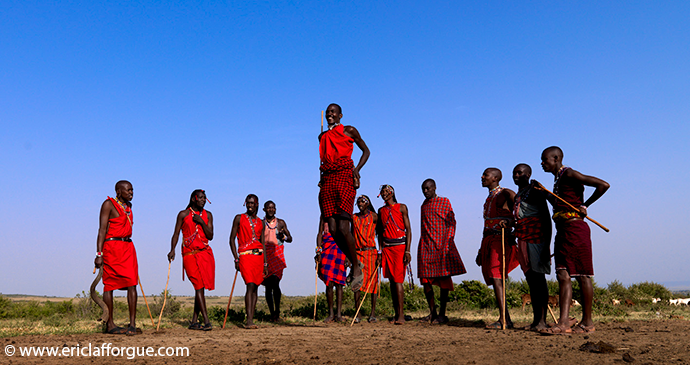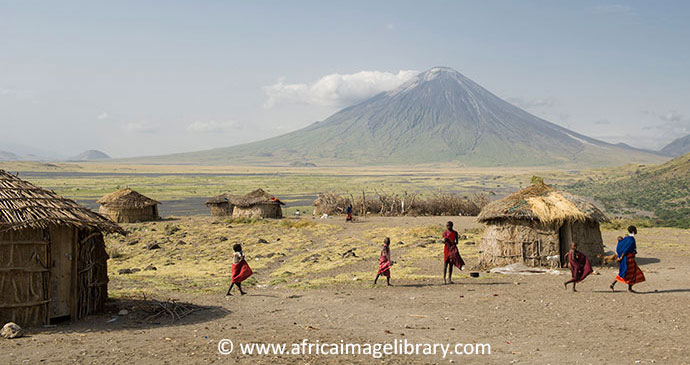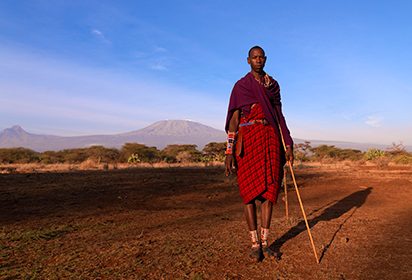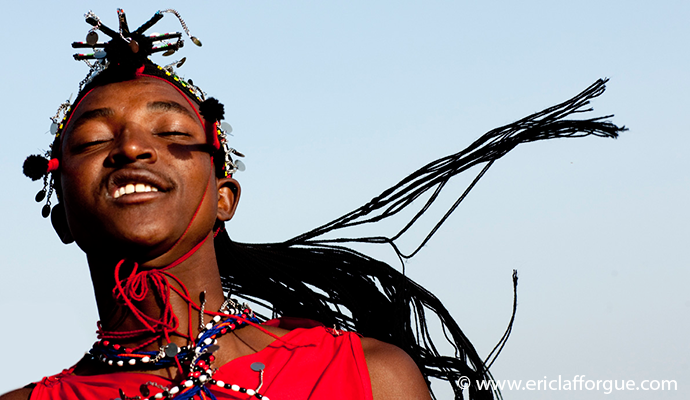Written by Philip Briggs
The northern safari circuit is the homeland of the Nilotic-speaking Maasai, whose reputation as fearsome warriors ensured that the 19th-century slave caravans studiously avoided their territory, which was one of the last parts of East Africa ventured into by Europeans. The Maasai today remain the most familiar of African people to outsiders, a reputation that rests as much on their continued adherence to a traditional lifestyle as on past exploits. Instantly identifi able, Maasai men drape themselves in toga-like red blankets, carry long wooden poles, and often dye their hair with red ochre and style it in a manner that has been compared to a Roman helmet. And while the women dress similarly to many other Tanzanian women, their extensive use of beaded jewellery is highly distinctive, too.

The Maasai are often regarded to be the archetypal East African pastoralists, but are in fact relatively recent arrivals to the area. Their language Maa (Maasai literally means ‘Maa-speakers’) is affi liated to those languages spoken by the Nuer of southwest Ethiopia and the Bari of southern Sudan, and oral traditions suggest that the proto-Maasai started to migrate southward from the lower Nile area in the 15th century. They arrived in their present territory in the 17th or 18th century, forcefully displacing earlier inhabitants such as the Datoga and Chagga, who respectively migrated south to the Hanang area and east to the Kilimanjaro foothills. The Maasai territory reached its greatest extent in the mid 19th century, when it covered most of the Rift Valley from Marsabit (Kenya) south to Dodoma.
Over the 1880s/90s, the Maasai were hit by a series of disasters linked to the arrival of Europeans – rinderpest and smallpox epidemics exacerbated by a severe drought and a bloody secession dispute – and much of their former territory was recolonised by tribes whom they had displaced a century earlier. During the colonial era, a further 50% of their land was lost to game reserves and settler farms. These territorial incursions notwithstanding, the Maasai today have one of the most extensive territories of any Tanzanian tribe, ranging across the vast Maasai Steppes to the Ngorongoro Highlands and Serengeti Plains.

The Maasai are monotheists whose belief in a single deity with a dualistic nature – the benevolent Engai Narok (Black God) and vengeful Engai Nanyokie (Red God) – has some overtones of the Judaic faith. They believe that Engai, who resides in the volcano Ol Doinyo Lengai, made them the rightful owners of all the cattle in the world, a view that has occasionally made life difficult for neighbouring herders. Traditionally, this arrogance does not merely extend to cattle: agriculturist and fish-eating peoples are scorned, while Europeans’ uptight style of clothing earned them the Maasai name Iloredaa Enjekat – Fart Smotherers! Today, the Maasai coexist peacefully with their non-Maasai compatriots, but while their tolerance for their neighbours’ idiosyncrasies has increased in recent decades, they show little interest in changing their own lifestyle.
The Maasai measure a man’s wealth in terms of cattle and children rather than money – a herd of about 50 cattle is respectable, the more children the better, and a man who has plenty of one but not the other is regarded as poor. Traditionally, the Maasai will not hunt or eat vegetable matter or fish, but feed almost exclusively off their cattle. The main diet is a blend of cow’s milk and blood, the latter drained – it is said painlessly – from a strategic nick in the animal’s jugular vein. Because the cows are more valuable to them alive than dead, they are generally slaughtered only on special occasions. Meat and milk are never eaten on the same day, because it is insulting to the cattle to feed off the living and the dead at the same time.
Despite the apparent hardship of their chosen lifestyle, many Maasai are wealthy by any standards. On one safari, our driver pointed out a not unusually large herd of cattle that would fetch the market equivalent of three new Land Rovers. The central unit of Maasai society is the age-set. Every 15 years or so, a new and individually named generation of warriors or Ilmoran will be initiated, consisting of all the young men who have reached puberty and are not part of a previous ageset – most boys aged between 12 and 25. Every boy must undergo the Emorata (circumcision ceremony) before he is accepted as a warrior. If he cries out during the 5-minute operation, which is performed without any anaesthetic, the postcircumcision ceremony will be cancelled, the parents spat on for raising a coward, and the initiate taunted by his peers for several years before he is forgiven. When a new generation of warriors is initiated, the existing Ilmoran graduate to become junior elders, who are responsible for all political and legislative decisions until they in turn graduate to become senior elders. All political decisions are made democratically, and the role of the chief elder or Laibon is essentially that of a spiritual and moral leader.
Maasai girls are permitted to marry as soon as they have been initiated, but warriors must wait until their age-set has graduated to elder status, which will be 15 years later, when a fresh warrior age-set has been initiated. This arrangement ties in with the polygamous nature of Maasai society: in days past, most elders would typically have acquired between three and ten wives by the time they reached old age. Marriages are generally arranged, sometimes even before the female party is
born, as a man may ‘book’ the next daughter produced by a friend to be his son’s wife. Marriage is evidently viewed as a straightforward, child-producing business arrangement: it is normal for married men and women to have sleeping partners other than their spouse, provided that those partners are of an appropriate ageset. Should a woman become pregnant by another lover, the prestige attached to having many children outweighs any minor concerns about infidelity, and the husband will still bring up the child as his own. By contrast, although sex before marriage is condoned, an unmarried girl who falls pregnant brings disgrace on her family, and in former times would have been fed to the hyenas.
Learn more about Tanzania’s tribes in our comprehensive guide:


